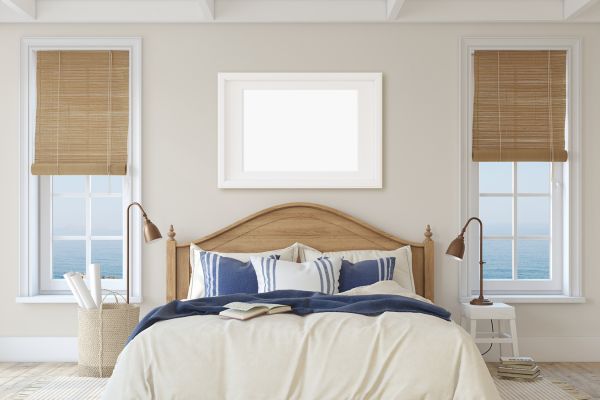There’s something undeniably soothing about the ocean—the sound of the waves, the warmth of the sand, and the refreshing sea breeze. The coastal interior design style seeks to capture that very essence, bringing the peace and tranquility of seaside living into our homes. This design approach has surged in popularity, not only in beachside properties but also in suburban and urban homes, offering a breath of fresh air to interior aesthetics. Embracing this style allows homeowners to create a serene, light-filled space that feels both airy and grounded.
Understanding the Coastal Interior Design Style
The coastal interior design style draws inspiration from the natural beauty of coastal landscapes. It’s not merely about adding shells and anchors to a room; rather, it’s a sophisticated blend of soft color palettes, natural textures, and airy layouts. At its core, this style aims to mirror the peaceful ambiance found by the sea, using design elements that evoke openness and calm.
Typically, the color palette leans toward whites, soft beiges, pale blues, and gentle greys—reminiscent of sandy shores, sea foam, and cloudless skies. The design prioritizes natural light and open spaces, giving rooms an expansive, breezy feel. Materials such as linen, rattan, driftwood, and jute play a central role, offering both texture and authenticity.
Key Features That Define Coastal Style
A hallmark of the coastal interior design style is its ability to blur the line between indoors and outdoors. Large windows, open-plan layouts, and sheer curtains that allow sunlight to filter through are often employed to create a space that feels connected to nature. This emphasis on natural light not only enhances the color scheme but also uplifts the mood and energy of a room.
Furniture in coastal interiors tends to be relaxed and inviting. Sofas are typically overstuffed and comfortable, often upholstered in cotton or linen. Wood finishes are either lightly stained or whitewashed to give them a weathered look, echoing the organic elements of a beachside environment. Décor remains uncluttered and purposeful, ensuring the space retains a clean and harmonious feel.
Textiles are another defining element. Think of lightweight throws, soft cushions, and breezy fabrics that gently flutter with the wind. Patterns are used sparingly, with subtle stripes or botanical motifs often chosen to reflect the environment without overwhelming the space.
Bringing Coastal Design Into Any Home
You don’t need to live near the ocean to embrace the coastal interior design style. In fact, this style is as much a state of mind as it is a design choice. It’s about creating a retreat that offers a sense of relaxation and escape, no matter where you are.
Start by focusing on the color scheme. Opt for shades that reflect the beach, like sea-glass green, powder blue, and sandy beige. These colors work beautifully with white walls or ceilings, enhancing the feeling of openness. Natural wood flooring or light-colored tiles can also add to the breezy atmosphere.
When choosing furniture, prioritize comfort and simplicity. Look for pieces that are both stylish and unfussy—those that invite you to sit down, kick off your shoes, and unwind. Incorporate natural textures through items like woven baskets, sisal rugs, or driftwood-inspired accessories. These elements not only add visual interest but also tie the entire look together with an organic touch.
Art and decorative pieces can be chosen with subtle nods to the sea, such as abstract seascapes or marine-inspired ceramics. However, the coastal look shines best when these elements are used sparingly and thoughtfully, ensuring the space doesn’t veer into cliché territory.
The Emotional Impact of Coastal Interiors
What sets the coastal interior design style apart is its emotional resonance. It’s not just about aesthetics; it’s about how a space makes you feel. Coastal design encourages relaxation, mindfulness, and an overall sense of well-being. The light, airy atmosphere created by its design choices offers a reprieve from the fast-paced world outside.
There’s a reason why spas and retreats often adopt coastal elements in their design—it works. The interplay of natural light, soothing colors, and organic materials has a calming effect on the mind and body. Whether you’re coming home from a long day at work or spending a quiet weekend inside, a coastal-inspired home becomes a sanctuary of peace.
Modern Coastal vs. Traditional Coastal
Over the years, the coastal interior design style has evolved into various substyles. Traditional coastal design tends to be more rustic, with nautical themes and a heavy use of sea-related décor. In contrast, modern coastal is more minimalist and refined. It focuses on clean lines, open spaces, and subtle accents that hint at the seaside without overpowering the design.
Both approaches have their charm, and the choice often comes down to personal preference. While traditional coastal may feel more casual and laid-back, modern coastal leans toward elegance and sophistication. Whichever route you choose, the foundation remains the same: a connection to the calming beauty of the coast.
Sustainability in Coastal Design
Another appealing aspect of the coastal interior design style is its alignment with sustainable living. By emphasizing natural materials and timeless pieces, coastal design supports a more conscious approach to home décor. Rather than focusing on fast trends, it encourages investment in quality furnishings that age gracefully.
Repurposed wood, vintage accessories, and handmade textiles not only contribute to the aesthetic but also reduce environmental impact. Many designers in this space advocate for sourcing local or eco-friendly materials, further tying the design to a deeper appreciation of nature.
Coastal Design in Different Rooms
The versatility of the coastal interior design style allows it to be applied seamlessly throughout an entire home. In the living room, it creates a space that’s perfect for relaxing with family or entertaining guests. In the kitchen, light cabinetry paired with marble or stone countertops enhances the fresh, open feel. Bedrooms designed with a coastal touch become havens of rest, utilizing soft lighting and breathable fabrics to ensure a peaceful night’s sleep.
Bathrooms also benefit greatly from this design style. The use of pale tiles, natural stone, and subtle marine accents can turn an ordinary space into a spa-like retreat. Even home offices can take cues from coastal design, incorporating natural light and calming tones to improve focus and reduce stress.
Conclusion: Embracing the Calm and Beauty of Coastal Living
The coastal interior design style offers more than just visual appeal—it provides a lifestyle rooted in peace, simplicity, and connection to nature. Whether you live by the sea or in the heart of a bustling city, this design approach can transform your home into a serene escape. By incorporating light-filled spaces, natural textures, and soft colors, coastal design invites you to slow down and breathe deeply.
In a world that often feels chaotic, the timeless elegance and tranquility of coastal interiors serve as a gentle reminder of the beauty found in simplicity. Embracing this style means welcoming the ocean’s calm into your everyday life—one carefully chosen element at a time.




